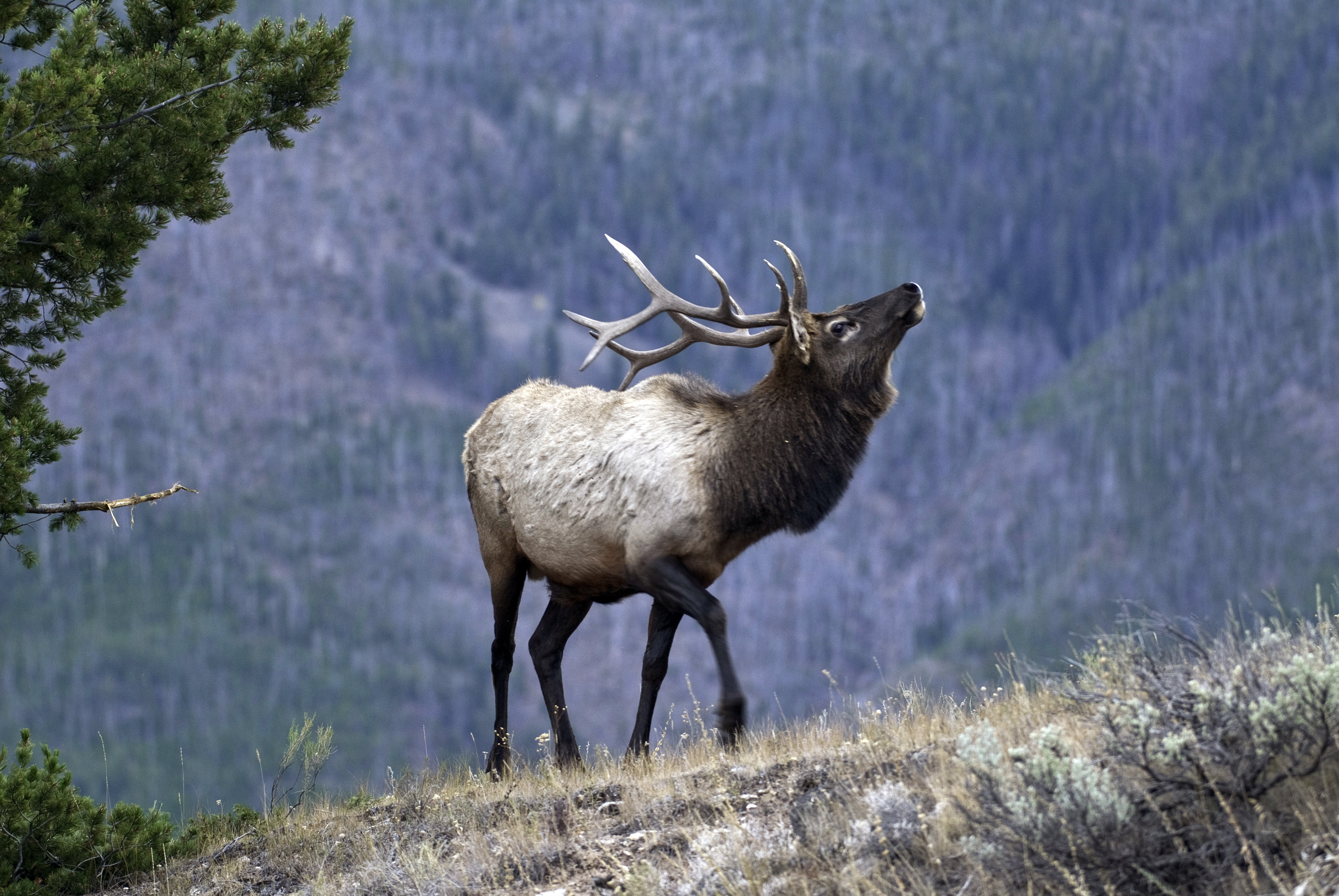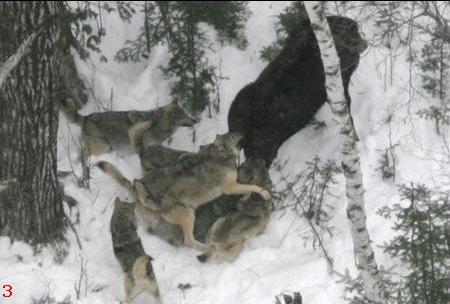

These include habitat loss and degradation, wildfires, human development, parasites, and predation. Similar to mule deer, the decline is likely due to a variety of factors. Moose populations have declined over the past 30-40 years through much of the U.S. 25 Since then, populations have increased to nearly 3000 moose. Additional moose were reintroduced to the Creede area in south-central Colorado between 1991-1993 and to the Grand Mesa in west-central Colorado between 2005-2007. A moose population was established in Colorado with the introduction of moose into north-central Colorado in the late 1970s. 23-25 These strays were probably just transient animals seeking new habitats, but they never came in large enough numbers to establish a stable population. Historically, moose were rare in Colorado, with only a few stray animals wandering in from Wyoming. Restrictions on moose hunting, forest fire suppression, and predator control programs led moose to become abundant in the northern Rocky Mountains by the mid-late 1900s.

19-25 Moose likely immigrated from Montana and Idaho to Wyoming in the 1850’s. Moose are relatively recent arrivals to parts of the U.S. 6 Mule Deer and Wolves in the Northern Rocky Mountains In 2019, Wyoming Game and Fish estimated that elk populations are 29% above objective for those herds it counts. 16 In Wyoming, most elk herds also are above population objectives. In response, the agency has conducted regulated hunting and targeted control efforts to reduce wolf populations in the area. According to Idaho Department of Fish and Game, wolves and other predators have contributed to local declines of elk herds, along with habitat degradation and harsh winters.

This is the case in the Lolo Zone in northern Idaho. 8 However, some elk herds are below population objectives. Similarly, in Idaho, elk herds currently are within or above management objectives in 17 of 22 elk management zones. Reprinted from Montana Fish, Wildlife & Parks. Red above objective Green within objective Yellow below objective. Montana elk population objectives by hunting district. 15 Some elk hunting districts are currently below population objectives set by the state (yellow in Figure 7). Yet in other areas, elk numbers have declined, due in part to wolf predation. 7 This includes areas with wolves, including near Yellowstone in the southwest corner of the state. 15 Elk population sizes are at or above objectives set by the state game agency in most hunting districts in the state (red and green in Figure 7). In western Montana, where both wolves and elk live, elk harvest by hunters has been steady or increasing in many places. Note that these estimates of population sizes are made after the hunting season, representing the number of elk available after hunters had the opportunity to hunt.įigure 5. 5 Elk post-hunt population sizes 6-9 (Figure 1) and hunter harvest of elk 10-13 (Figure 2) in Wyoming, Montana, and Idaho have not declined since wolves were reintroduced starting in 1995. In much of the northern Rocky Mountains, including in Yellowstone National Park, elk are the primary prey of wolves. Such is the case for many states with wolves including Alaska the Great Lake States of Minnesota, Wisconsin, and Michigan and the northern Rocky Mountain States of Wyoming, Montana, Idaho. In states with wolves, abundant big game and hunter harvests can still occur. 4Įlk and Wolves in the Northern Rocky Mountains Similarly, human hunters can also alter movement and habitat use of big game. 3 This would make hunting more challenging in some areas. 1 Wolves also can make big game more wary, move more, and use habitat differently by seeking more cover. This is more likely when harsh weather, other predators (e.g., bears, cougars, coyotes), or human hunters also kill animals. Wolves can contribute to local declines in the number of prey. 2 Under such conditions, wolves alone are unlikely to reduce big game populations. Typically, over 80% of hunting attempts end unsuccessfully. 1 Also, the hunting success rates for wolves are low. Wolves chase down their prey and often target old and weak animals that might have otherwise died from starvation or disease. The impact of wolves on elk, deer, and other big game is complicated.


 0 kommentar(er)
0 kommentar(er)
